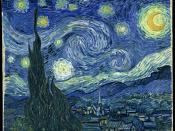Bipolar Disorder, also known as manic depression, is a depressive disorder (Buchana, 2007). Bipolar Disorder is a mental illness describes as a deep or persistent reaction of despondency or despair, as the loss of interest in areas of life that was once appreciated. Bipolar disorder is distinguished by mood swings from deep depression to intense euphoria, with some phases of normalcy. An individual suffering from bipolar disorder may display additional symptoms associated with progressive brain disorder. During the manic state, a personÃÂs mood is raised significantly, expansive, or are extremely irritable. This type of behavior may cause an up-roar in oneÃÂs professional and social life, affecting their relationships. The individual suffering from this illness may require some type of hospitalization to avoid hurting themselves or others. Severe depression, the latter part of the illness, is distinguished by the increase of the symptoms associated with moderate depression.
Bipolar is separated into different categories, Bipolar I, Bipolar II Disorder, and Cyclothymic Disorder.
Bipolar I is diagnosed to when a person has experienced or is currently experiencing mixed symptoms, or the entire conditions of manic depression. Bipolar II Disorder is illustrated by repeated battles of major depression with episodic incidents of hypomania, a less severe form of mania. The patient has never suffered an occurrence that requires the mixed symptomatolgy or the entire criteria of mania. For example, an individual will experiencing symptoms of hyperactivity will not be strong enough to cause damage to the occupational or social functioning or need any form of hospitalization. Cyclothymic, the last category is described as an individual having a period of two years of chronic mood disturbances, including multiple episodes of hypomania.
Although bipolar is separated into categories the symptoms can be seen with all three types of bipolar. One possible factor for the occurrence...


